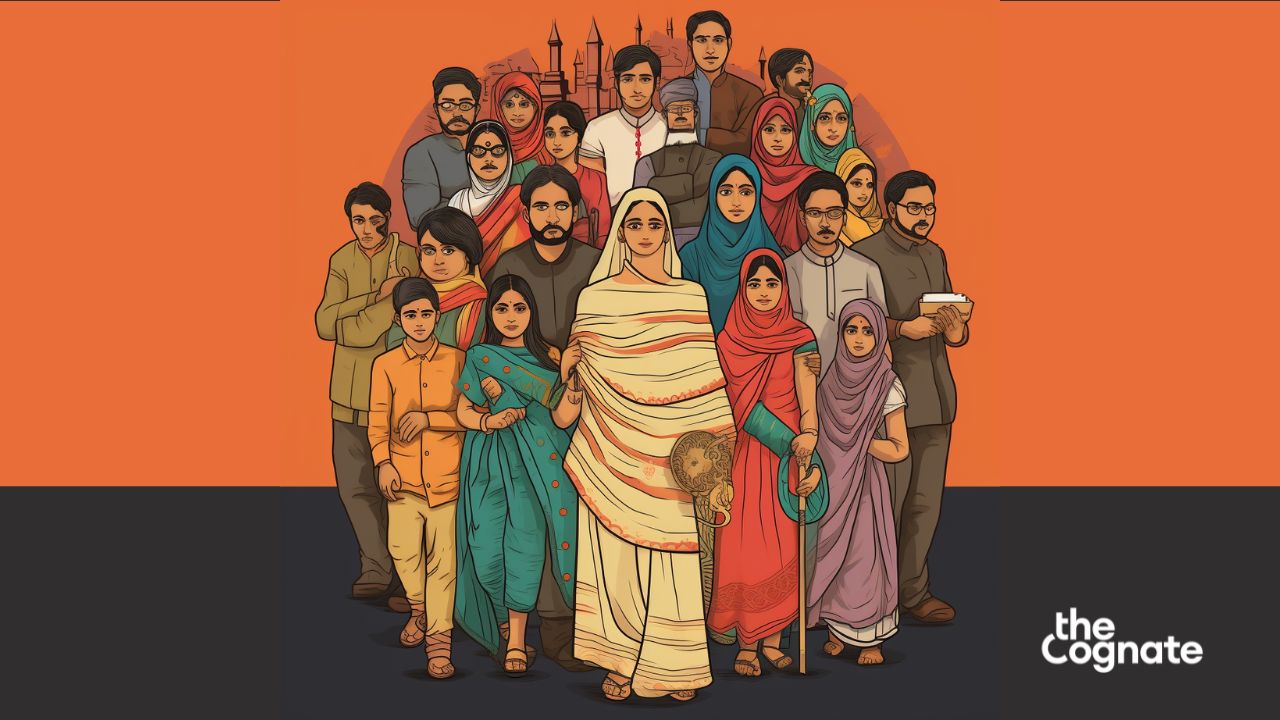Abstract
It is pertinent to note that the current calls of uniformity in India are made with a condescending attitude of civilising communities. These calls are nonetheless camouflaged in political realities. Hence, this article discusses the severe repercussions that a western influenced Uniform Civil Code can have on a heterogeneous country like India and suggests that any calls for reforms within personal laws ought to come from within different communities.
A Historical Peep
The uniform civil code finds its roots in codes drafted in European countries during the 19th and the 20th century. The UCC is predominantly drawn from the French Code of 1804; this had abolished all form of customary and statutory laws enforced at that time. Cut to the first war of Independence of 1857, the Britishers were taught a lesson by Indians to not mend around with the personal codes of various communities in India. This was followed by the partition where great amount of resistance was shown during the constituent assembly debates against a uniform civil code. The framers of the constitution nevertheless came up with a Hindu Code Bill which never materialized.
In 1998 the Bhartiya Janta party assured to legislate a Uniform Civil Code if they came into power. The BJP has consistently argued that overlooking Muslim law would result in discrimination between different communities. Thus, the BJP has in the past criticised on the supposedly unequal treatment of different communities. For a long time the UCC was a feminist issue but gradually turned out to articulate itself as uniformity vs minority rights issue.
The UCC debate in India has passed through multiple phases and thus has been grounded in different norms – national consolidation, equality of laws and at present gender justice. The current ruling party the Bhartiya Janta Party during its 2014, election manifesto projected the need for a gender equality state and asserted the need for a Uniform Civil Code.
With time, the debate on religion and gender justice in feminist politics has moved from a position of blatantly ignoring religion to an attempt to work for religious reform from within, if any. This change in stance has appeared during a time when communalisation of religion was evident thereby leading to a weak secular state. Politicisation of religion has thrown issues of minorities at centre stage which vociferously discusses women’s rights in different communities.
In the last decade the debate has become exceedingly complex with the changing stances of women’s groups. There has been a sharp shift that has led to instances such as the Ayodhya issue and the rise of the BJP. Although feminists believe that all personal laws are highly discriminatory, they differ on how reform needs to be executed. To distance themselves from the right-wing call for a UCC, feminists have turned to more nuanced positions such as the need for reforms from within personal laws leading to gender justice.
For instance, the All-India Democratic Women’s Association which initially promoted the idea of a Uniform Civil Code, presently supports a gradual change in personal laws of different communities. It acknowledges the difficulty of state-based initiative to bring in a Uniform Civil Code. Over the years an important development has occurred where Muslim women have taken up activism to promote women’s rights rather than investing efforts on reforming personal laws. Muslim women in India form a large population, they are disadvantaged in many areas such as education, economic status and autonomy which are clearly elements which determine the low status of a woman. Scholars have argued that it is hypocritical at best when the status of a Muslim woman is only looked through personal laws and not through the lens of empowerment.
The Myopic Induction
At a time of political turmoil in India, it is necessary that we engage in the UCC debate not just with a condescending attitude of “uniformity for all” without deliberating first on uniformity itself. David Hume in his book -The Treatise of Human Nature, described the problem of induction. He projects that we naturally believe that our observations are a good indicator to justify future events. The observation that my first brilliant and safe trip to Moscow in the 1980’s does not necessarily justify that a present-day trip to Moscow will be safe or that a trip to any southeast Asian country will be quite enriching in the same breath. Any inference from the observed to the unobserved is referred as inductive references. The problem for Hume is how do we explain why we form a conclusion and that a conclusion needs to be beyond any past experiences.
Similarly, to draw inferences of instances where uniform laws have been applied in homogeneous countries such as France and the same being applied to a heterogeneous country like India is only going to muddle the waters more. Rather than inviting a blatant call for a Uniform Civil Code in India it is pertinent that conspicuous claims of gender injustice prevalent in minority communities be studied from an anthropological lens. It is unreasonable to look at it in silos through sensational case laws. Any conclusion of establishing a Uniform Civil Code must be beyond the understanding of past experiences of other countries and individual case laws deliberated in the courts without any theological expertise or anthropological evidence to support it.
The Pandora’s Box
The narrative peddled around by the proponents of UCC is that a common code will put an end to all regressive personal laws. However, political scientist Asim Ali states “The reality is more complex”. The UCC will prove disastrous as it will dislodge the social life of both Hindus and Muslims. It is interesting to note that most Hindus and Muslims are against the UCC. Hindus too follow a set of personal laws, and the personal law of Muslims is not uniform; The Sunni Bohra Muslims follow the Hindu Personal law in matters of inheritance.
There are multiple inheritance laws in different states. North-eastern Christian-majority states such as Nagaland and Mizoram have their own personal laws which are derived from customs and not necessarily their faith. A Kashmiri Brahmin woman will be grounded in different customs and norms when compared to a Sarayupari Brahmin woman. A Brahmin woman in West Bengal is necessarily rooted in different norms when compared to a Namboodri Brahmin in Kerala. When a complex form of heterogeneous society is understood from an anthropological sense it occurs that what seems to be common is different both in its form and culture.
In such a diverse society the magic bullet of UCC is being peddled in the form of emancipatory politics. Similarly, the Supreme Court of India in various cases has reminded the government for the need of a UCC overlooking the stark realities on ground. In 2018 the law commission who advises the government on legal reform stated that the UCC was neither necessary nor desirable” The UCC debate entails the idea of secularism which needs to be analysed carefully. Moreover, gender justice is at the core of the UCC debate and ought to be investigated carefully rather than prescribing a one fit size for all formula.
Will the UCC oppress women?
The uniform civil code is highly hinged on the pretext of providing gender justice to women oppressed through personal laws. Blind and facile calls for reform of personal laws without carefully understanding individual positions of various stakeholders especially women will render more harm than good. Muslim women are considered to be at a disadvantaged position when compared to Hindu women as they don’t have a codified law to protect them. The narrative that rights of Hindu women being protected is largely an assumption as the codification of the Hindu law has not addressed the question of social reform aptly. The rights of Hindu women took a backseat under the garb of secularism and the protection of the rights of minority women.
Also Read: Uniform Civil Code And The Lingayats
Indian legislators reflected the values of their western colonizers and drafted the codified Hindu law and cherry-picked principles from various personal laws which seemed appropriate to the Britishers. Thus, before idealizing the concept of universality, the flip side of codification of personal laws needs to be looked into. The status of Hindu women suffers despite the codification of Hindu law. The marumakkatayam system found in Kerala was a system which had advanced succession law.
However, due to the codification of the Hindu law the possibility of a more evolved form of succession laws never saw the light of its day and thus backfired instead of solving the problem of gender injustice. Unsurprisingly it is only the educated class within the Hindu community which resorts to the courts for a divorce. On a larger scale, women are abandoned by their husbands and are divorced without any formal backing. This has only compounded the plight of women in rural areas. Hence, reforms from within the community can be encouraged; any attempts to impose a blanket prescription such as the UCC will only push the stature of women down south.
Way Forward
A nuanced stance by the government that embodies the principle of progressive multiculturalism will be a welcome move. This principle celebrates the idea “accommodation of difference”; which is core requirement of liberal politics. It guarantees minorities and other disadvantaged communities’ safety and tolerance by investing its energies on fixing the plight of women through key public goods such as employment and education than pressing facile calls for reforms of personal laws. In the spirit of public accommodation of minority differences within a heterogeneous country like India, communities ought to be offered with autonomy and pluralism to bring in reforms within their own personal laws.
Government efforts need to focus on ‘respect’ and ‘participation’ for all citizens and that the idea of progressive multiculturalism needs to be embodied as a model of ‘integration’ and ‘uniformity’ which will increase participation of minorities alongside the majority in the political, social, and economic realms. Hence, it will then neither separate nor assimilate a community under the wide ambit of the uniform civil code.
Conclusion
The implementation of the UCC will make way for a plethora of issues most importantly it will fail to serve the purpose of gender justice. Uniformity may lead to excessive arbitrariness. A pertinent question which we need to ask ourselves is whether uniformity has ever eradicated gender inequality? Injustice may carry different connotations in different communities and groups. Hence, if majoritarian thinkers believe that unjust practices exist in different personal laws there needs to be a gradual reform from within a community than haphazardly harming the heterogeneous social fabric of India by painting a uniform definition of injustice and then proposing a one size fits all approach of UCC; this will only compound the plight of the disadvantaged communities.












